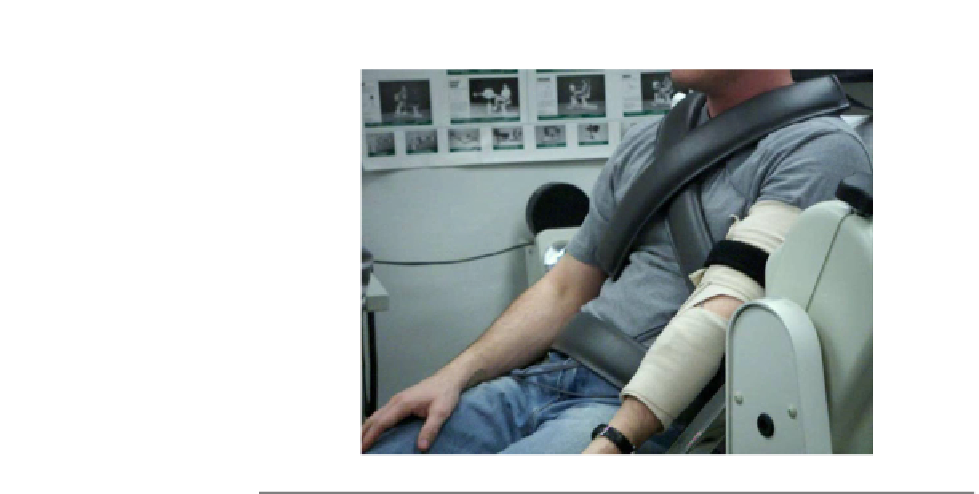Biomedical Engineering Reference
In-Depth Information
FIGURE 6.6
Strength assessment for the elbow using an isokinetic dynamometer.
6.4
Normative strength data
There are numerous studies reporting on joint-level strength, particularly focusing
on torque-angle (isometric) and/or torque-velocity (isokinetic) data. Advances in
DHM coupled with the use of predictive dynamics or optimization techniques can
better utilize information gleaned from both of these relationships more so than
previous quasi-static DH models, which relied almost solely on torque-angle data.
To best utilize both of these “two-dimensional” curvilinear relationships (i.e., 2D
curves of torque-angle or torque-velocity), recently studies have begun to evaluate
“three-dimensional” strength relationships: torque as a function of both velocity and
angle, creating 3D surfaces (
Anderson et al., 2007; Frey-Law et al., 2012b
;
Khalaf
and Parnianpour, 2001; Khalaf et al., 1997, 2000, 2001
). For example, the strength
surfaces shown in
Figure 6.7
represent the mean concentric strength values for knee
flexion and extension torque as a function of joint angle and movement velocity (i.e.,
3D strength surfaces), for both males and females.
Note that the shape of the flexion and extension surfaces differ, suggesting the
mechanical advantages due to muscle lengths and muscle moment arms play a
significant role in determining the 3D peak torque surface. However, the surfaces
are qualitatively similar between men and women; they differ primarily in abso-
lute strength levels. Similarly, 3D strength surfaces for shoulder flexion and
extension are shown in
Figure 6.8
.
These 3D surfaces have been modeled in various ways, including modifica-
tions to the torque-velocity relationship accounting for changes in joint angle and
eccentric contractions (
Anderson et al., 2007
) and second-order polynomials



Search WWH ::

Custom Search